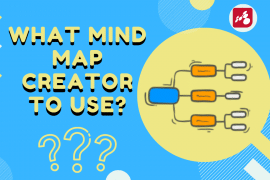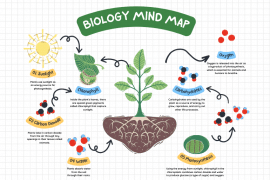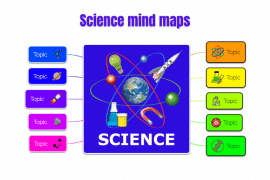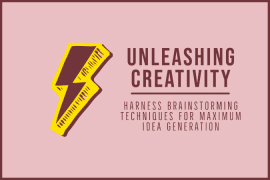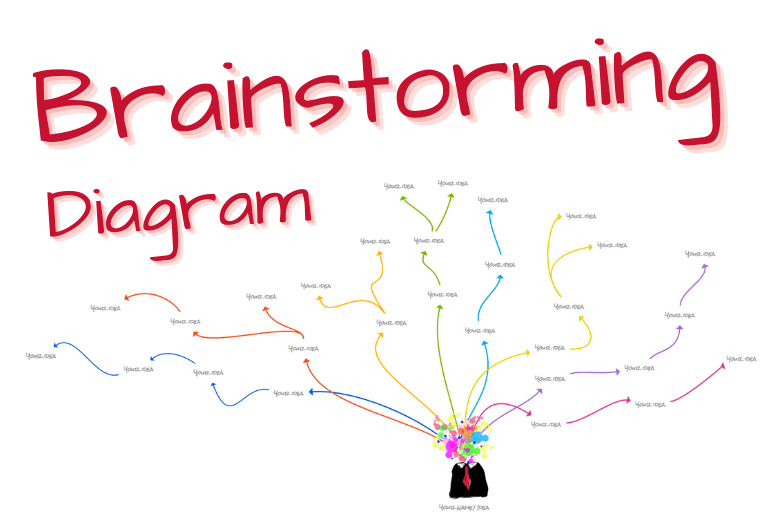
What is a brainstorming diagram?
A brainstorming diagram is a visual diagram used to connect similar words, ideas, thoughts, and images. It is a brilliant tool for generating and grouping ideas, organizing information, visualizing concepts, and being a study aid.
Brainstorming is a personal activity; a single person or a group can perform it. It is a process that involves gathering ideas quickly to provide a solution to a specific problem. The information collected is then evaluated to check its authenticity, after which the ideas are put into action to achieve particular objectives.
A brainstorming session is the best if you are looking for the perfect way to find answers to some hard questions either as a student or as an expert. In addition, it promotes good association and collaboration among team members.
It provides diverse ways of solving a particular issue through the brainstorming tab. Another reason why brainstorming is the best is that it makes different people contribute their quota and not just one person making decisions, which promotes team spirit.
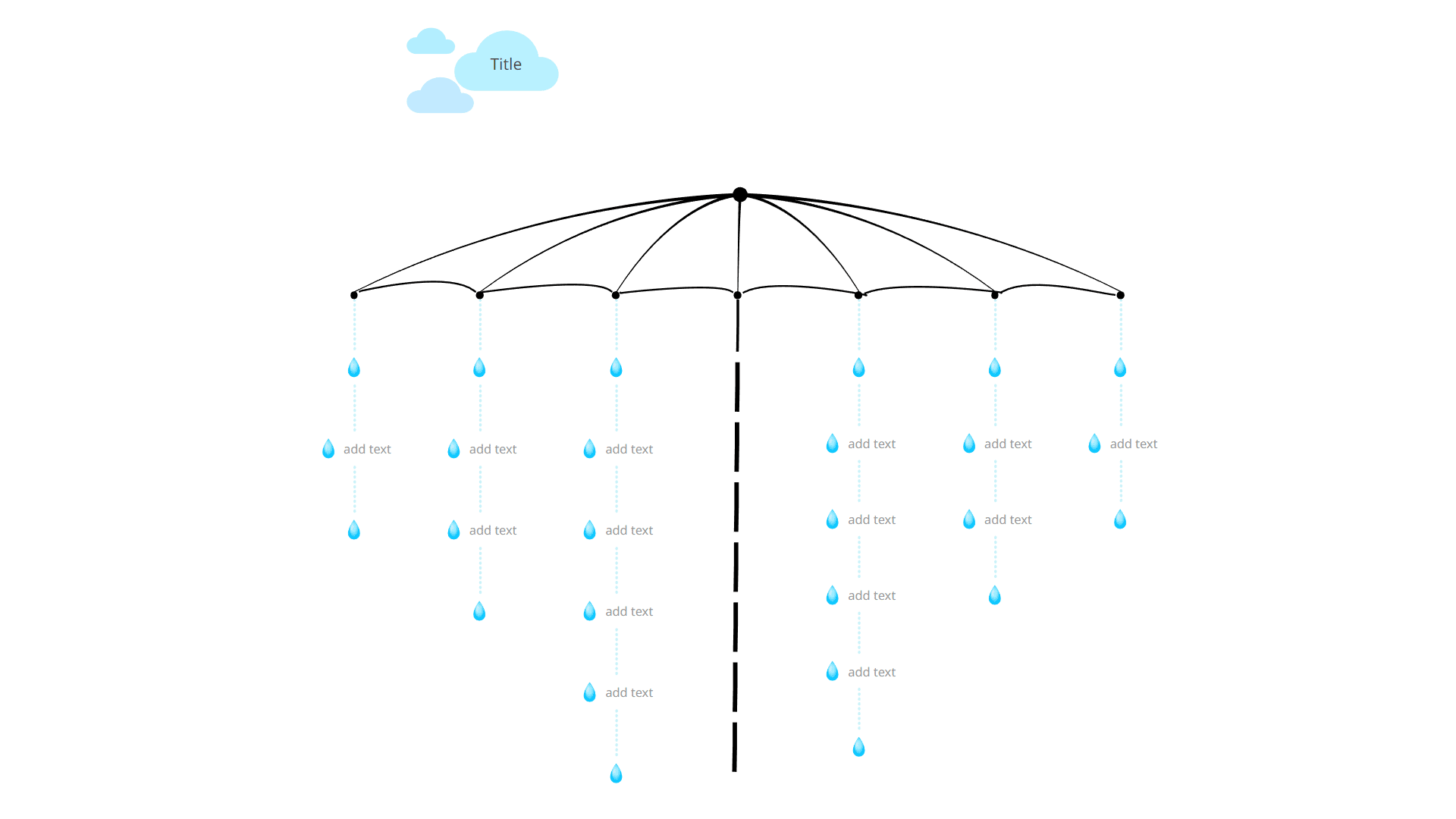
Types of Brainstorming Diagrams
Professionals use different types of brainstorming diagrams. You would have heard about mind map diagrams, fishbone diagrams, and swot analysis. All of them are also part of the brainstorming diagram. Listed below are some of the types of brainstorming diagrams:
1. Reverse brainstorming
Reverse brainstorming diagrams involve addressing problems creatively by reversing the situation and approaching the issue from a different angle to generate fresh ideas. In this system, the first thing to do is identify the problem and reverse the situation to create the right solution.
Assuming someone is not buying your product, you will have to work on why they are not buying and then solve the problem from your answer instead of finding solutions for not buying your product directly. However, reverse brainstorming is a little bit complex and requires more research. The easiest way to analyze the situation is by creating a mind map (learn more about what a mind map is). You can use mind map software to create this brainstorming:
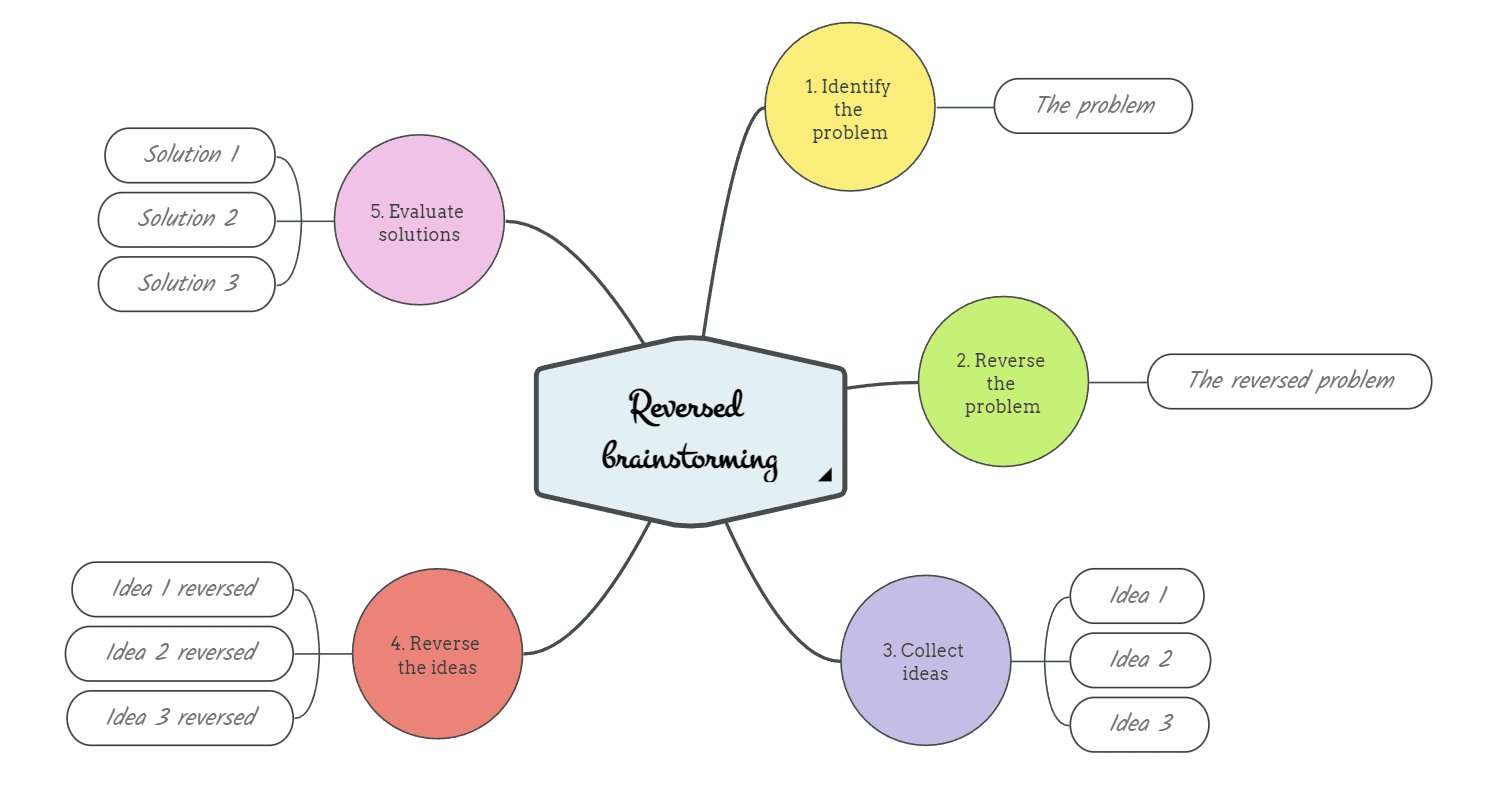
2. Affinity Diagram
The affinity diagram is one of the best methods to effectively organize many ideas, facts, or pieces of information. It is mainly used to compile data from surveys, focus groups, or testing. Imagine it as creating an outline window for your brainstorming ideas once they have all been produced. It would be best to have a diagram representing your thoughts and agreement after brainstorming; that is what an affinity diagram offers.
Affinity diagrams frequently come after extensive and fluid brainstorming sessions when many ideas have been produced. It is a type of mind map, but it has unique characteristics. The following process depicts how the affinity diagram works:
- First, keep track of each concept or fact separately.
- Next, group any common themes or ideas.
- Find connections and relationships between groupings, then organize them under a larger “master group.”
- Continue doing this until there are only a few amounts of top-level groups left.
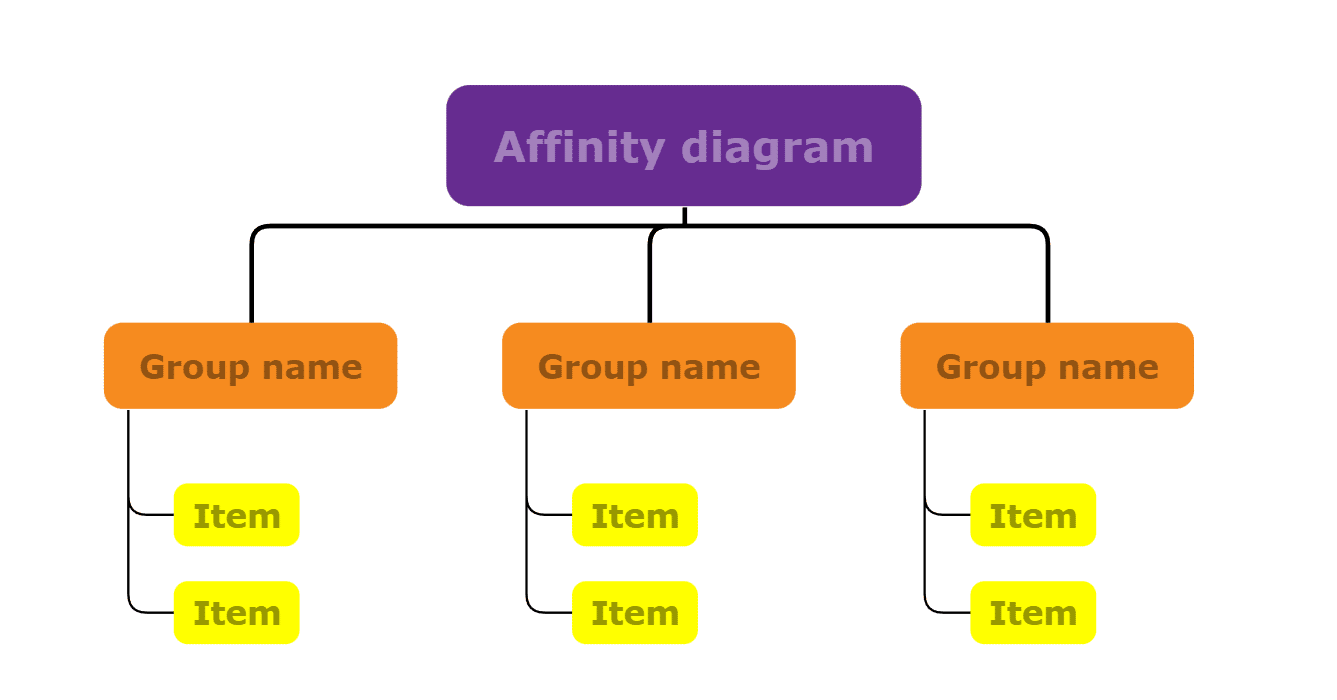
3. Question Brainstorming
Participants in this type of brainstorming meeting have more questions than ideas. The questions serve as a source of inspiration for others, and when they are answered, new questions are subsequently raised. The participants then rank the questions according to their urgency. After which, they work on it to generate more ideas.
Question brainstorming is a great educational tool. It challenges students’ knowledge and inspires more comprehensive thinking. This method is ideal for group learning in the classroom and allows students to have fun while learning something new in lessons. Below is how question storming works:
- Pick a question or central topic.
- Create numerous questions that flow from this question as a group (or individually)—this is called question-storming.
- You can then look at answers or suggestions for each of the questions produced and find the solution that suits the initial topic/question.
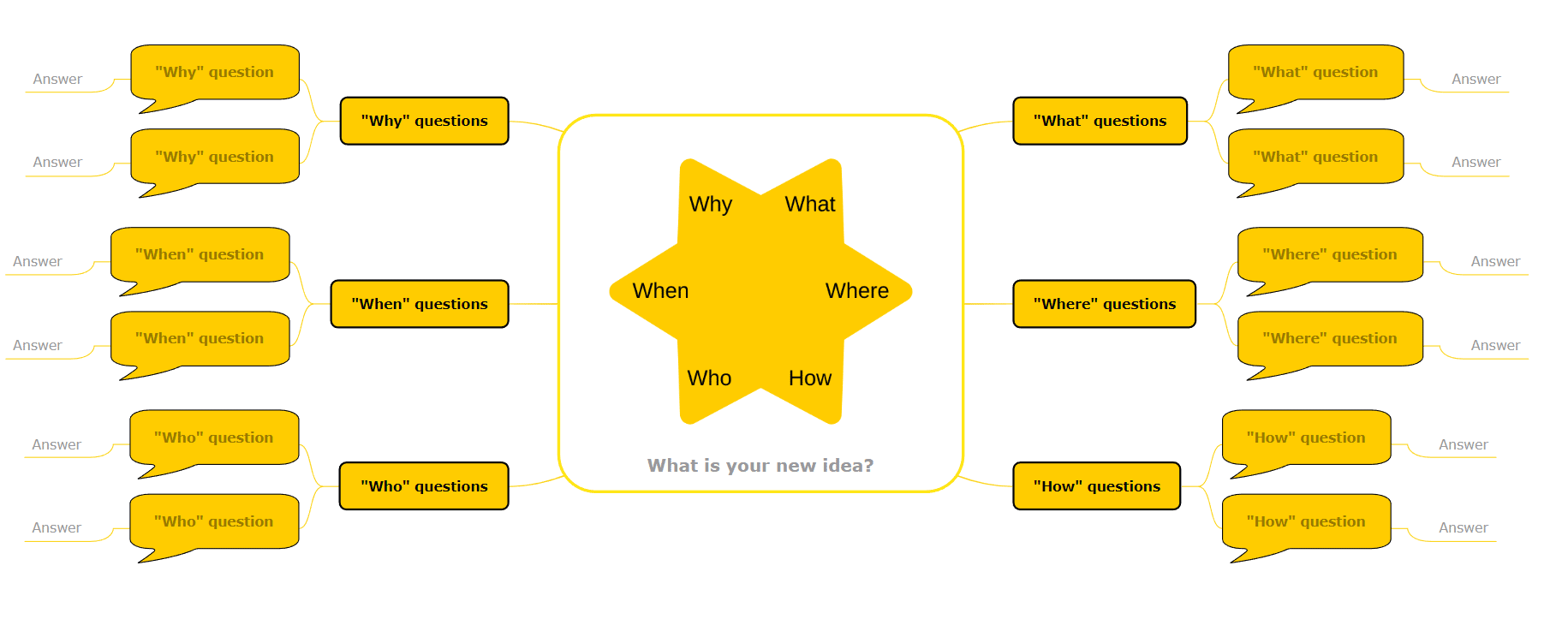
Brainwriting is a mighty brainstorming diagram that promotes independent thought and quick idea generation. In this type of brainstorming, participants are given some questions and a paper to document their ideas. They are to write down as many ideas as possible, which will later be shared with the group, where further evaluations occur.
4. Brainwriting
This method is suitable for rapidly creating collaborative and diverse ideas. It enables you to drag the main topic ideas and form more ideas. It also gives room for team spirit and helps those who can’t speak publicly to pen down their thoughts. The steps involved in brainwriting are as follows:
- First, give some set of questions/topics to a group.
- Then, allow them to spend some time individually recording their thoughts about the question.
- They should forward their ideas to another person when the allotted time has passed, allowing other people to read the notes and add their suggestions.
- You may do this several times.

5. Spider diagram
The spider diagram is almost the same as the brainstorming template but provides more flexibility in its structure. It has a main body with several ideas branching out of it, making it resemble bubble maps and mind maps. However, it is typically less organized and has rougher edges.
Spider diagrams are frequently used in classrooms and schools to promote collaborative thinking and teach students all-level concepts and planning strategies.
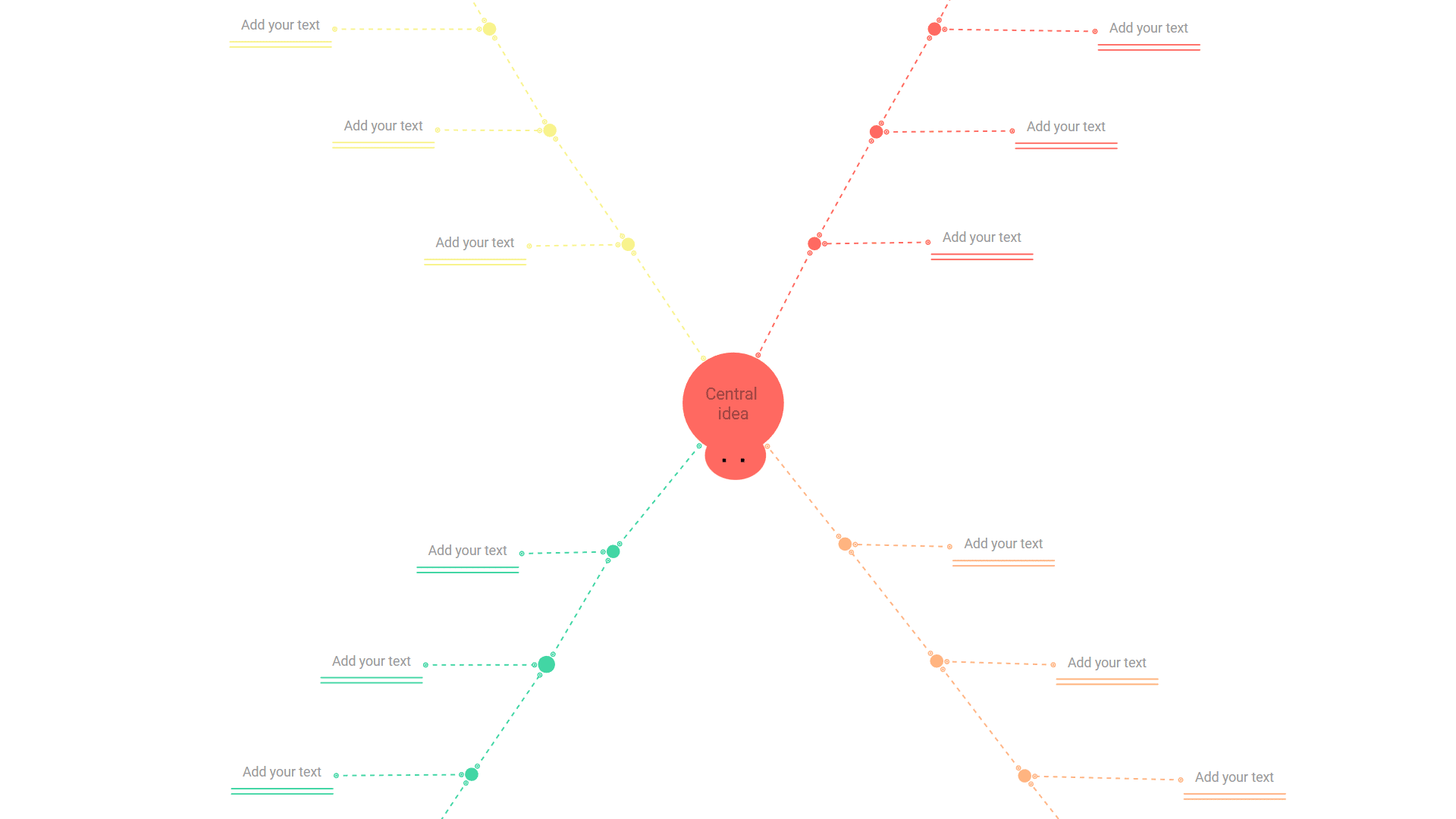
Benefits of using a brainstorming diagram
Besides the obvious reason for generating new ideas, this technique can help you in other aspects as well.
Brainstorming helps simplify complex processes
Brainstorming templates help simplify complex topics and bring out new concept maps. A mind map helps; it makes it easy to bring out more ideas from a topic shape.
Brainstorming stimulates better presentation
Using a swot analysis diagram helps stimulate better presentation during group meetings. It helps to drag the main topic ideas and form more ideas to boost a presentation.
Better engagement
Another important aspect of a brainstorming diagram is better engagement. Again, swot analysis works well; when more information is provided about a topic, members will engage, and more concept maps will be drawn.
How to create a brainstorming diagram
If you are looking for the right tools to create a brainstorming diagram, Mindomo is the best choice. It is a simple-to-use mind map software that offers a wide variety of templates, including a lot of options for brainstorming. Follow this process to get started:
- Visit Mindomo and sign up with your email; if you already have, log in.
- Locate New, then click on the Mind map among the options.
- Choose one template to edit or click on the plus sign to create from scratch.
- You can save, share, or export the file in your preferred format when you are done.
If you follow these steps, you will create a brainstorming diagram without wasting time.
A solid brainstorming diagram is an excellent tool for assisting your team in coming up with the most significant concepts and strategies. Brainstorming diagrams assist you in displaying the links between ideas in a hierarchy and help to identify related ideas or information. If you find it challenging to create a brainstorming diagram, this guide will walk you through it.
Keep it smart, simple, and creative!
The Mindomo Team

